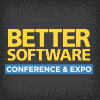Better Software Conference & EXPO 2008

PRESENTATIONS
|
Software Security Assessment: The Naked Truth
With software running our most critical business processes, we need to think about both its utility and the risk it can add to those processes. Hugh Thompson describes some of the best current techniques to efficiently assess software security risk. Hugh identifies the biggest risks to your software systems, presents the major categories of security vulnerabilities with their business consequences, and how you can begin an effective software risk assessment process. |
|
|
SOX and HIPPA and RESPA, Oh My! Mastering Software Compliance
Determining whether legal and contractual issues apply to your development efforts isn't always simple. There may be some obvious factors-industry regulations, service level agreements (SLAs), and state or federal agency oversight. However, other factors may not be so obvious. Even today, the Sarbanes-Oxley Act is largely legally untested, subjecting your company to unknown legal risks. |
|
|
Successful Process Improvement - The Agile Way
Using agile techniques to develop and implement new processes-whether for use in agile environments or not-will increase stakeholder involvement and buy-in, lower cultural resistance, reduce process development cycle time, and encourage continuous process improvement. Join Nelson Perez as he explains how to translate the core principles of the Agile Manifesto into a context that you can apply to any process development and improvement program. |
|
|
Ten Principles of an Agile Tester
Everyone on an agile team does testing. If that's true, what's so special about an agile tester? If I define myself as a tester on an agile team, what does that really mean? Do agile testers need skill sets different from testers on traditional teams? What guides agile testers in their daily activities? Lisa Crispin believes that when it comes to agile testers, skills are important-but attitude is everything. |

Lisa Crispin, ePlan Services, Inc. |
|
Test-Driven Analysis: Focus on the User, Not the Code
Test-driven analysis (TDA) focuses on the system at the user interface level. By concentrating on scenarios from the users' point of view, TDA examines the inputs and outputs of a system and how the state of that system changes as a result of actions performed on the system. Further, TDA concentrates on creating tests that help developers and business analysts understand the problem domain and the system requirements. |

Ken Pugh, Net Objectives |
|
The Challenges of SOA Security
Service Oriented Architecture (SOA) has many security challenges. To address these challenges, it is not enough to set up a secure operational infrastructure. SOA security must be implemented in all key areas of software development-architecture, design, platform, governance, requirements, development, and testing. Jimmy Xu discusses today's SOA security challenges and explains why it is important to address these challenges inside software development. |

Jimmy Xu, CGI Inc. |
|
The Give and Take of Design Criticism
Have you ever engaged in a design discussion where people didn't play fair? Do you have trouble giving advice that sticks or accepting criticism of your own work? Do you know when you should take up an argument and when is it better to let things slide? Every software engineer needs skills at giving, absorbing, and reacting appropriately to criticism. We should know when to pick our battles and how to spot and counteract faulty reasoning. We should be able to give advice so that others get it, and if they don't, determine why. |
|
|
The Good, the Better, and the Rather Puzzling: The Agile Experience at Five Companies
Strategic software development is happening every day-and failures continue to plague us. Unquestionably, a major paradigm shift is underway with the movement to agile methods. But are they really working? With results drawn from industry statistics, Michael Mah answers vital questions about the effectiveness of agile methodologies-XP, Scrum, TDD, pair programming, etc. One discovery underway is that agile methods could be turning the "law of software physics" upside down. |

Michael Mah, QSM Associates, Inc. |
|
The Impact of Poor Estimating and How to Fix It
Running Scrum by-the-book for three months, the team was continually failing to meet its delivery commitments. As a result, trust between the business managers and the team degraded almost to a point-of-no-return. Even holding bi-weekly retrospectives, the team could not pinpoint the problems causing their inability to release iterations on time. Mitch Lacey was asked to assist the team in finding the root causes of the problems. He analyzed multiple aspects of the project-from individual work items to planning meetings. |

Mitch Lacey, Ascentium |
|
The Leadership Imperative: Creating a Culture of Trust
In our personal and business lives, many of us know leaders who successfully foster environments of incredible creativity, innovation, and ideas-while other leaders try but fail. So, how do the top leaders get it right? Going beyond the basics, Pollyanna Pixton explores with you the ways that the best leaders create "safety nets" that allow people to discover and try new possibilities, fail early, and correct faster. |

Pollyanna Pixton, Accelinnova |


